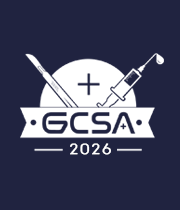Title : Does time of day attending the emergency department with an ankle fracture dislocation affect patient outcomes? An assessment of efficacy and timing of first reduction and impact on short and long term patient outcomes
Abstract:
Introduction:
Globally ankle fractures dislocations (AFD) are increasingly common injuries that necessitates urgently expedited management to avoid complex and lengthy hospital admission. British Orthopaedic Association (BOA) and British Orthopaedic Foot and Ankle Society (BOFAS) guidance indicates reduction and splinting should be performed urgently for clinically deformed ankles to avoid catastrophic soft tissue insult and allow early surgical intervention improving outcomes. Radiographs should be obtained before reduction unless this will cause an unacceptable delay. Adequate reduction must be confirmed by review of repeat radiographs and documented before transfer from the emergency department (ED). It has been noted in the UK system due to a combination of finite resources and an ageing population that services have become stretched. This is especially true in ED and can mean
Aim:
All patients attending ED with an AFD that required surgery were retrospectively studied over a year long period assessing time of attendance in the day as well as time taken and the efficacy of reduction in a busy UK trauma unit. Compliance was assessed to BOA AFD guidelines outlined above. Additionally, the study aimed to answer the question if the time of day patients are attending had an impact on timing of first reduction and if this had a clinically significant impact on their management pathway, length of stay as well as functional outcome and health care finances. In this regard AFD were also assessed for: Initial injury position, time of day patient triaged and timing of 1st reduction attempt, final x-ray position on leaving ED and postsurgery 1 year functional outcome (EuroQol / EQ-5D and Olerud Molander Ankle Scores).
Results:
39 patients were shortlisted meeting the entry and exclusion criteria for the study. 20/39 presented with fracture subluxation and 19/39 with fracture dislocation. 1st attempted reduction mean time was 102.91 mins. First reduction significantly increased through the day: morning (06:00 - 1:59) 28.2 mins for 7 patients; afternoon (2pm – 19:59) 96.7 mins for 18 patients and evening session (20:00 – 05:59) mean time 156.86 mins for 14 pts. On leaving ED , 26 patients were congruently reduced, 10 subluxed and 3 remained dislocated. Mean length of hospital stay was 6.5 days (range: 19 – 1). 5of the 6 patients requiring admission >4 days attended theatre twice (initial EX fix followed by definitive fixation). Mean number of fracture clinic attendances post discharge was 4.53. 1 year post-surgical functional outcome 9/39 patients were contactable and consented to the questionnaire assessment and mean Euro-Qol / EQ-5D Score (each category scores 0-5, maximum score of 25) was 7.3 with range from 5 to 13.
Conclusion:
Our study outlines a negative correlation between the time of day an individual with an AFD presents to ED and efficacy and timing of first reduction. The project has now been implemented across 13 hospitals in the west midlands region of the UK where similar outcomes have been noted in early pilot data. The study has led to education and practical sessions being organised within orthopaedics and ED departments to better understanding of importance of prompt and competent reduction as well as ability in doing so to improve outcomes in this regard and avoid unfortunate delay to definitive surgery and discharge.



